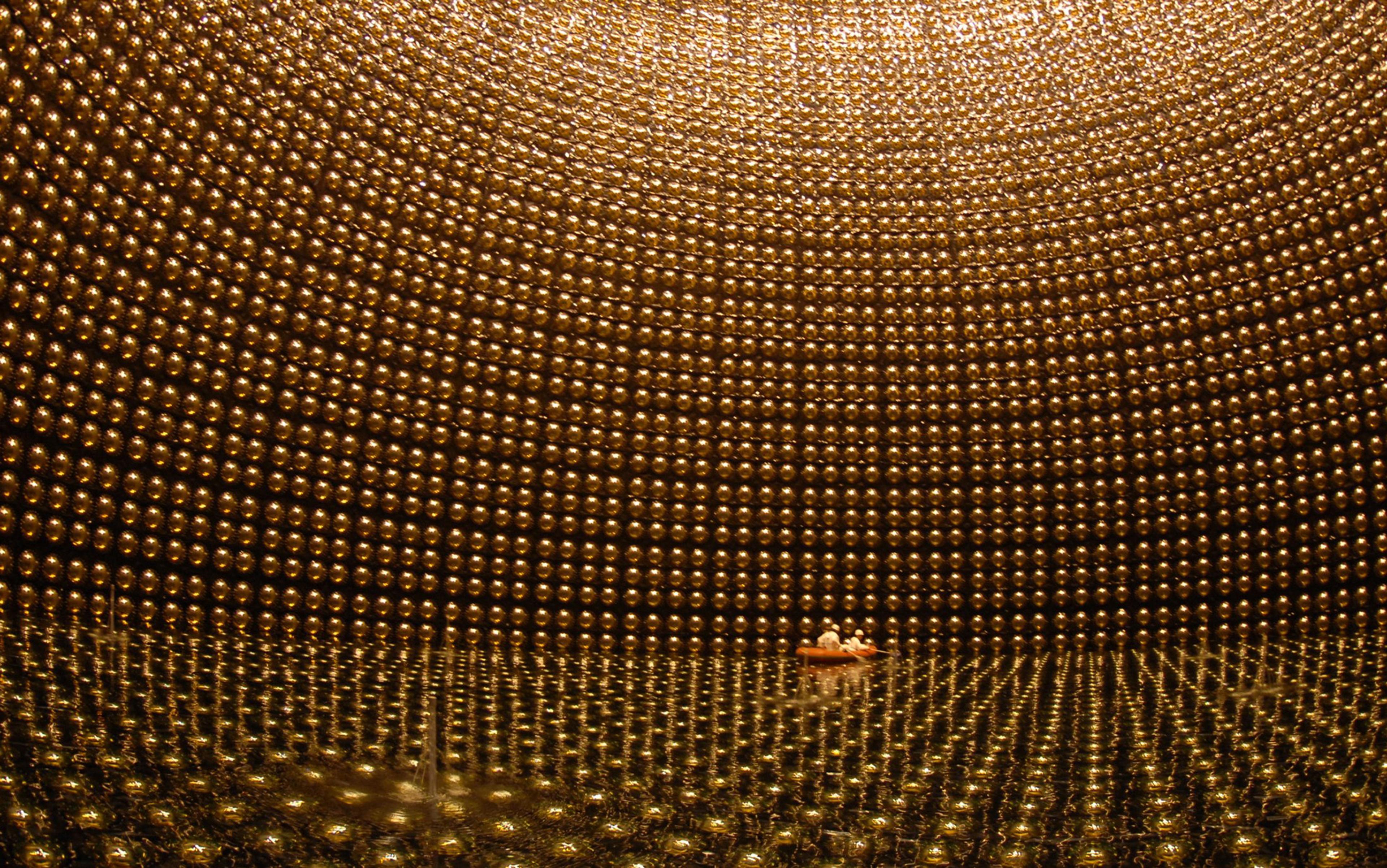When trying to explain what motivates me as a physicist, the film A Passage to India (1984) comes to mind. Based on the play by Santha Rama Rau, adapted from the novel by E M Forster, it describes the fallout from a rape case in the fictional city of Chandrapore, during the British Raj in India in the 1920s. What keeps the viewer’s attention is the subtlety of the relationships between the characters – particularly the fragile friendship between the man accused of the rape, Dr Aziz, and an Englishman, Mr Fielding. Data about identity alone, such as race, class, gender or educational status, can never reveal these dynamics nor capture why they fascinate us. When the case arrives in court, ostensibly similar people behave very differently in relation to the defendant. The dynamics of individual behaviour trump any immutable labels we might apply; yet these static labels also impose constraints on just how far any individual can go. We watch, we theorise, and we update our knowledge of the characters and the forces at work. By the end, we find that Fielding and Aziz are more alike than we’d thought, having created a new bond on the basis of a more complete understanding of one another.
The curiosity that drives many particle physicists isn’t so different from what keeps us watching A Passage to India. The obvious and immutable data about the identity of elementary particles include their spins, their electric charges and their masses. From muons to charms, we can learn such information pretty quickly. But it takes years, even lifetimes, to reveal both the nature and degree of their relationships. The neutrino, for example, was introduced in 1930 by Wolfgang Pauli, who needed to account for the fact that energy was conserved when a nucleus broke apart. But he would never have guessed how deep the relationship is between a left-handed spinning electron and the neutrino. It took more than 40 years of careful observations and ingenious theoretical work to reveal the deeper unified relationship they have together: via the fundamental force we now know as the ‘weak force’. That’s where the deepest and most satisfying learning in particle physics is to be found: through painstaking observations and the sifting of evidence comes a creative willingness to allow for multiple possibilities.
With the discovery of the Higgs boson in 2012, every elementary particle predicted by the Standard Model of physics has now been found. Yet the field is far from ‘done’. Among the continuing work, physicists are still looking for a grand unified theory that explains the forces that operate at the subatomic level – a common understanding that accounts for the disparate phenomena we observe among the particles we have in hand. Not everyone agrees that this is worthwhile or even possible; some think we finished learning new things about elementary particles in 2012, and we must accept the cacophony of unrelated details in our physics tables. But I believe that to understand nature at its foundations, it’s necessary to push further, to unearth more subtle and surprising relationships beneath the surface of what we see. Our observations to date support the idea that a unified theory of subatomic forces can be achieved. If true, it would revolutionise our understanding of nature far beyond any discovery of particle physics in the past half century – akin to theological transitions from polytheistic religion (many deities, many fundamental forces) to a monotheistic religion (one unified God, one unified force).
Unification revelations – ‘they are more like each other than we thought’ – have been remarkably productive throughout science. We now know that nature is often simpler and more cohesive than it seems. For most of human history, our theories for why planets move was disconnected from beliefs about why boulders tumble down mountains and apples fall off trees. But in 1687, Isaac Newton revealed that gravity offered a single, unifying explanation. All the explanations that had one ‘force’ for planets wandering in the sky, and another for apples being pulled to the ground, were brought together in one economical framework.
Other odd forces revealed themselves to us, but good explanations were slow to arrive. Between his duties attending to the medical needs of Queen Elizabeth I and her court, the physician and physicist William Gilbert wrote his magnum opus De Magnete at the start of the 17th century on the forces and attractions of electric charges that explained the workings of a compass. But the challenge of how to reconcile electrical charges with magnetic attraction and repulsion fascinated and confused natural philosophers for centuries thereafter. The crowning achievement came in 1861, when James Clerk Maxwell unveiled a set of equations that put electricity and magnetism on equal footing. The theory of electromagnetism showed that they were ‘more alike than you think’.
What led Einstein to general relativity were thoughts of unifying disparate objects
However, a conundrum remained in Newton’s theory of gravity and his laws of motion. The mass of a particle that’s used in equations to predict the particle’s acceleration when subject to any force (electromagnetic force, gravitational force, force due to a spring, etc) is mysteriously exactly the same mass that’s used in different equations to determine what gravitational force exists between the particle and some other body. The first kind of mass is called the ‘inertial mass’ and the second kind ‘gravitational mass’. Newton had to arbitrarily assume their exact equivalence to get the correct answers, even though there was no compelling reason why it had to be so.
However, Albert Einstein’s general theory of relativity solved this mystery by theorising that there’s a single unified origin for both types of masses. Einstein recognised that the feeling of total weightlessness when you’re in freefall, even in the presence of gravity, is because of the equivalence of your inertial and gravitational masses. He elevated this observation to the principle of equivalence. In an acclaimed review article on relativity in 1907, he concluded that any new gravitational theory that included his new concepts had to conform with the principle of equivalence. It was this idea that ultimately helped him complete the formulation of the general theory of relativity in 1915.
What’s so interesting about the principle of equivalence, from our point of view, is that it could just as easily be called the principle of mass unification. What led Einstein to general relativity were thoughts of unifying disparate objects (these masses are ‘more alike than you think’), which in the old theory had no reason to be connected to each other. Newton unified planetary orbits and apple falls; Maxwell unified electricity and magnetism; and Einstein unified inertial mass and gravitational mass.
What new frontier can we identify in nature that calls out for deeper understanding of the relationships between particles – a new principle in the tradition of unifying planetary orbits with falling apples, electricity with magnetism, and inertial mass with gravitation? A good answer is a tighter relationship between elementary particles through the unification of certain forces that determine their interactions, known as the gauge forces. These three forces are electromagnetism, the weak force and the strong force.
With these three forces come many gauge bosons – a fancy way of describing the particles that are exchanged in order to activate the forces. There are a total of 12 such gauge bosons, or force carriers, in the Standard Model. There is one electromagnetic gauge boson (the photon) associated with the electromagnetic gauge force, three weak gauge bosons (W+, W-, Z) associated with the weak gauge force, and eight strong-force gauge bosons (the gluons) associated with the strong gauge force.
The electromagnetic force is mediated by photons, which get exchanged between particles that feel electric attractions and repulsions. The weak gauge force is what causes many particles to decay into others. For example, a neutron will spontaneously fall apart into three new particles: a proton, an electron and an antineutrino. We didn’t understand exactly how this decay could happen. After all, neither the neutron nor the neutrino have an electric charge, so they can’t talk to each other via photon exchange of the electromagnetic force. So if not via photons and electromagnetism, what force could enable the decay? We subsequently learned that something happened between the existence of the neutron and the appearance of the other three particles that explained the decay: a very brief, quantum mechanical, split-second existence of a W boson particle that’s exchanged between the particles, acting as a vehicle for the weak force. Just like the photon allows charged particles to interact with each other, the W boson allowed the proton, neutron, electron and neutrino to interact with each other, enabling the neutron to decay. Radioactive nuclear ‘beta decays’ proceed by the same weak-force exchange of W bosons. Meanwhile, the strong force is what keeps quarks together inside the proton and neutron.
Our observations to date push us in the direction of entertaining the existence of an Ur-theory of nature
Now, what if all three of the gauge forces were to be unified into a grand unified force – a single Ur-force? What would the observational consequences of such a reality be? For one, the relative charges of each particle under all three gauge forces would have to follow a very particular pattern consistent with what a grand unified force would require. Secondly, the strength of each of the three forces would need to converge to a unified strength as we go to higher energies. Third, there would be new particles beyond those we have already seen. And finally, there would be decays and interactions among known particles that are forced on us, even at low energies, by the grand unified theory.
Our observations to date push us in the direction of entertaining the existence of an Ur-theory of nature. Consider the fact that a left-handed electron has an electric charge of -1 under the electromagnetic force, a charge of 2 (a ‘spin charge’) under the weak gauge force, and a charge of 0 under the strong force. At the same time, the right-handed down quark has an electric charge of -1/3, a weak force charge of 0, and a strong force charge of 3 (a ‘3-dimensional unitary group charge’, though the mathematical details don’t need to be understood here). So, between these two particles, we have charges of 0, -1/3, -1, 2 and 3, etc for the different forces arranged in a particular manner. It’s a motley crew of jumbled-up numbers, which doesn’t seem to have much rhyme or reason to it. However, a school of mathematics known as group theory tells us that this is exactly the collection of charges that are needed to form a new grand unified particle: let’s call it P, which can be represented as P=(left-handed electron, left-handed neutrino, right-handed down quark).
Likewise, we can analyse more particles in the Standard Model, such as right-handed electrons, right-handed up quarks and left-handed up and down quarks. After many measurements, we find another set of willy-nilly values for the charges they display under all three gauge forces. But upon closer inspection using group theory mathematics, we find that those numbers also magically fit exactly into a single grand unified particle: W=(right-handed electron, left-handed down quark, right-handed and left-handed up quarks). It’s as though 10 very raggedy puzzle pieces scattered on the floor were pieced together to make a perfect circle.
It didn’t have to be this way. The charges of the elementary particles in our Universe could have been such that there was no way to unify any two or more of them into a single unified particle. It’s the combination of observational data and mathematics that offers us strong hints that the charges for elementary particles in the standard model aren’t arbitrary, but rather arise by virtue of being embedded into a grand unified theory framework.
There’s a second set of observational data hinting that the unification of the gauge forces is nature’s choice. This comes from measuring the strengths of the forces. When we measure the strength of the electromagnetic interaction and compare it with, say, the strong interaction, we get a very different answer. For particles colliding with energies about 100 times that of the proton mass, the weak-force interaction strength is aweak=0.033, which contrasts with a strong-force interaction strength of about astrong=0.118. We see that αaweak is much less than αastrong, which is hardly what we’d expect if the forces are unified. Rather, we’d normally think that they should be the same if they were truly ‘unified’.
The resolution of this conundrum is that the strength of the forces depends on the energy scale at which they are evaluated. That is, the forces should unify at the energy scale where the grand unified theory is valid, and not at lower energies where the grand unified force might spontaneously split itself into a multitude of other forces (electromagnetic, weak and strong forces). So the question isn’t whether the strength of the forces is all the same at some randomly chosen energy scale, but rather if there is any energy scale where the couplings correspond.
They could be cruel coincidences of nature that have led us astray
Fortunately, a set of techniques known as the renormalisation group flow of coupling strengths – first pioneered by Kenneth Wilson in the early 1970s – enable us to test the energies required for the unification of forces. First, we input the values of the force strengths measured at any scale, and then we ‘run the couplings’ using the mathematical methods to see if the couplings converge at some higher scale. Incredibly, we find that the strongest force (the strong force) decreases its strength between particles when the particles smash into each other at very high energies, while the weakest force (the hypercharge force, derived from electromagnetism) increases its strength. All three force strengths (hypercharge, weak, and strong) therefore come very close together, as a grand unification of forces requires, at an energy that is about 15 or 16 orders of magnitude (1015 or 1016) higher than a proton’s mass. Imagine three soccer players at different points on the field kicking their soccer balls and all three colliding at one point over midfield. You’d be forgiven for thinking they did it on purpose in an attempt to make a viral YouTube video. Analogously, many physicists don’t think it was an accident that all three force couplings converge at high energies, and therefore we have a very tantalising picture of grand unification of the forces – nature did it ‘on purpose’.
Again, it didn’t have to be like this. One of the force strengths could have moved away from the pack as we moved up the energy scale. This would have immediately made the project of grand unification look impossible or highly suspect. Furthermore, the scale of putative unification adds to the positive view of this picture. Its value is neither too low to run up against the problem of proton decay (to be discussed below), nor is it too high (1017 or higher) to collude with the inscrutable dynamics of strong gravity that spoils all calculations and interpretations. We see again that observational data (force strength measurements) and theoretical work (group theory and renormalisation group techniques) have led us toward grand unification.
Is there any way to obtain direct proof of unification? What I’ve described so far count as strong hints, but by no means are they proof. They could be cruel coincidences of nature that have led us astray. To obtain ‘proof for all practical purposes’ would require us to do experiments at the unification scale and observe the production of new particles and new interactions directly through collisions. For example, many grand unified theory ideas require the existence of an additional grand unified gauge boson that could be directly produced in collisions, seen, and measured. Unfortunately, it’s out of the question to build a high-energy collider that could reach the energies where we think the grand unified theory resides. It took us many decades to reach energies of only a few thousand times the proton mass – and it might never be the case that experiments could reach energies of 15 orders of magnitude higher, which is what it would take to convince the most ardent sceptics.
The search for a grand theory isn’t over, though. One of the most sought-after hints is the data connected to the search for proton decay. Along with the neutron, the proton makes up the nuclei within our bodies. If the proton were to decay quickly, it would disrupt our cells and give us cancer and we could never have reliable life. Fortunately, the proton lives a very long time: as far as we know, it lives for at least 1034 years. That’s about 24 orders of magnitude longer than the lifetime of the Universe. The prediction of grand unified theories for the lifetime of the proton generally falls in the range of 1030 to 1036 years.
Any theories that predict a proton lifetime of less than 1034 years can be ruled out. The simplest grand unified theory is sometimes called the Georgi-Glashow minimal SU(5) theory, proposed in 1974. In its infancy, researchers thought that it predicted the proton lifetime to be less than 1030 years. At the time, confidence was so high that proponents believed they would quickly observe proton decay in experiments. Instead, the result came back negative in 1983 from the IMB (Irvine-Michigan-Brookhaven) experiment. The lifetime of a proton had to be greater than 1031 years, which appeared to rule out the minimal Georgi-Glashow theory.
However, the computations that seemed so rigorous back in the early 1980s look like approximations on top of simplifications today. Taking into account high-scale quantum corrections leads to a perfectly acceptable grand unification with proton decay lifetime prediction greater than 1034 years. This means that proton decay remains a promising frontier in the search for a grand unified theory.
The story of nature is all the more woven with an infinite number of patterns, most as yet unseen
Two experiments are now being built that will increase our ability to find out if the proton decays at lifetimes even greater than the current limits. The DUNE experiment in the United States and the Hyper-Kamiokande experiment in Japan are both attempting to find evidence. These experiments involve filling vessels with 40 kilotons of liquid argon and 260 kilotons of ultrapure water, respectively, and surrounding them with detection equipment to see the tiny flashes of electricity or light that would be the telltale signs of a proton decaying in the midst of all that material. The two main modes of decay they’re looking for are the proton decaying to positron and pion particles (the standard decay that almost all grand unified theories predict) and the proton disintegrating into kaon and neutrino particles (which is particularly important for unification that incorporates an idea known as supersymmetry).
If there really is a grand unified theory that explains the Universe beyond the standard model, it’s likely we should see both or either of these decays. For example, proton decay relies on the fact that the up quark, down quark and positron can all join together in a unified way to convert two up quarks in the proton into an anti-down quark in the pion and a positron – all made possible by the exchange of a very heavy X gauge boson present in the grand unified gauge force. Also, Hyper-Kamiokande expects to be able to find evidence for the proton decaying this way if its lifetime is less than 1035 years. This is an order of magnitude more sensitive than current experiments, but it’s still unclear if it gives us enough to see actual decay. We should know in about 15 to 20 years, when the new generation of experiments, such as DUNE and Hyper-Kamiokande, have been built and have taken enough data to make a good test of the ideas.
It’s vital for us to find and catalogue the particles that serve as nature’s raw material. But if we stop there, we’re like impatient school children who merely read the Wikipedia synopsis of A Passage to India and then get on with writing their term papers. There’s so much more to learn and to synthesise about this complex narrative than the basic facts reveal. The story of nature is all the more woven with an infinite number of patterns, most as yet unseen. The subtle relationships between particles – the interactions between themselves in many different environments – is what lends our understanding its richness. The revelations of unification in science in general, and especially in physics, have been incredibly fruitful in the deepening of our knowledge and in lighting the way to future discoveries.
Among the many possibilities for unification, nature seems to have dropped us irresistible hints that our particles and our gauge forces are indeed unified into a grand unified theory of some kind. These hints are based on observational data along with the advanced theoretical tools of relativistic quantum field theory and group theory mathematics. However, the limitations of our technology have also made it extremely hard for us to get more direct proof. Seeing a proton decay is one of our few hopes for more direct corroboration – and that’s why so much effort is going into watching protons with an eagle eye to see if one disintegrates. Data will determine whether unified theories will continue to pay off as they have for so many centuries. If history is our guide, we have every reason to believe they will.






